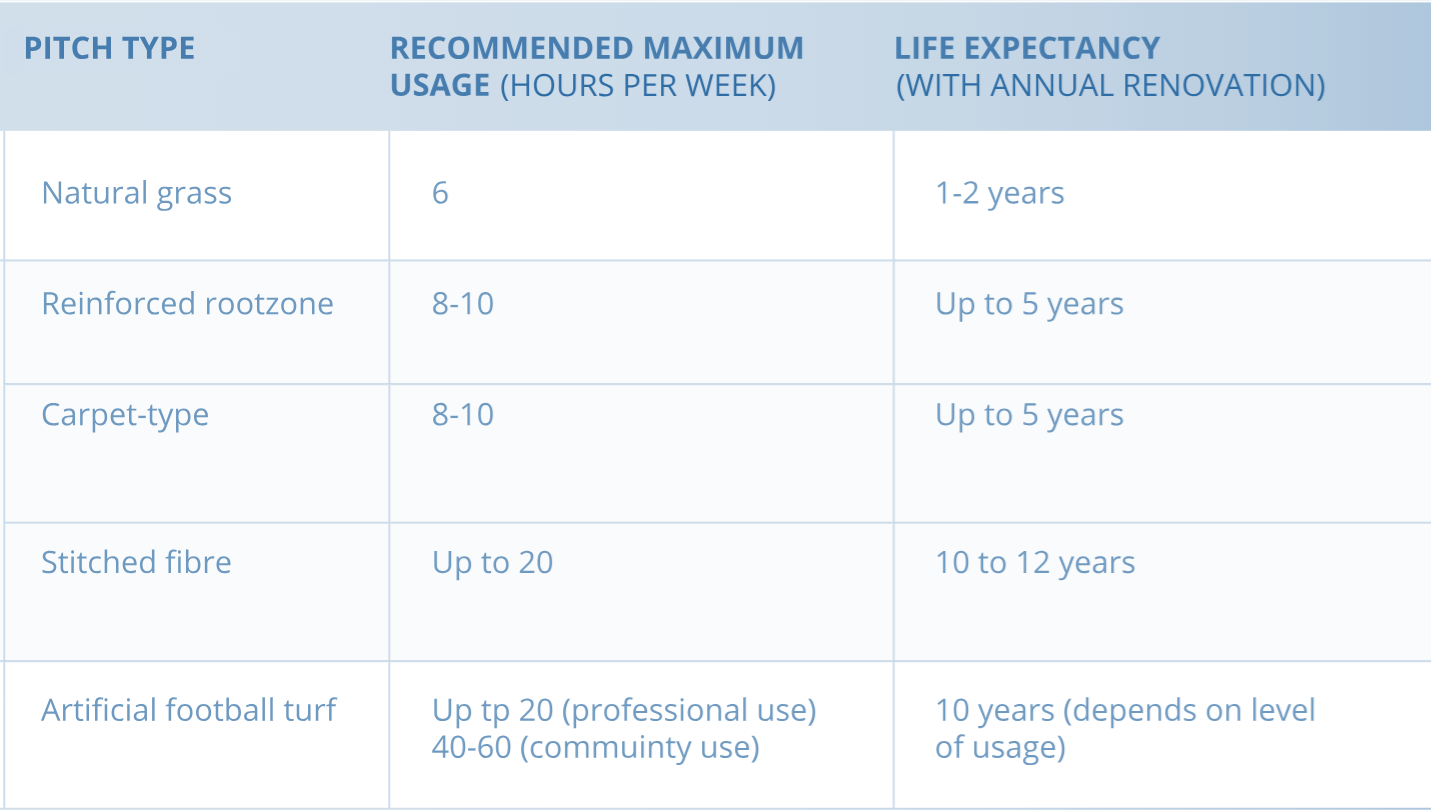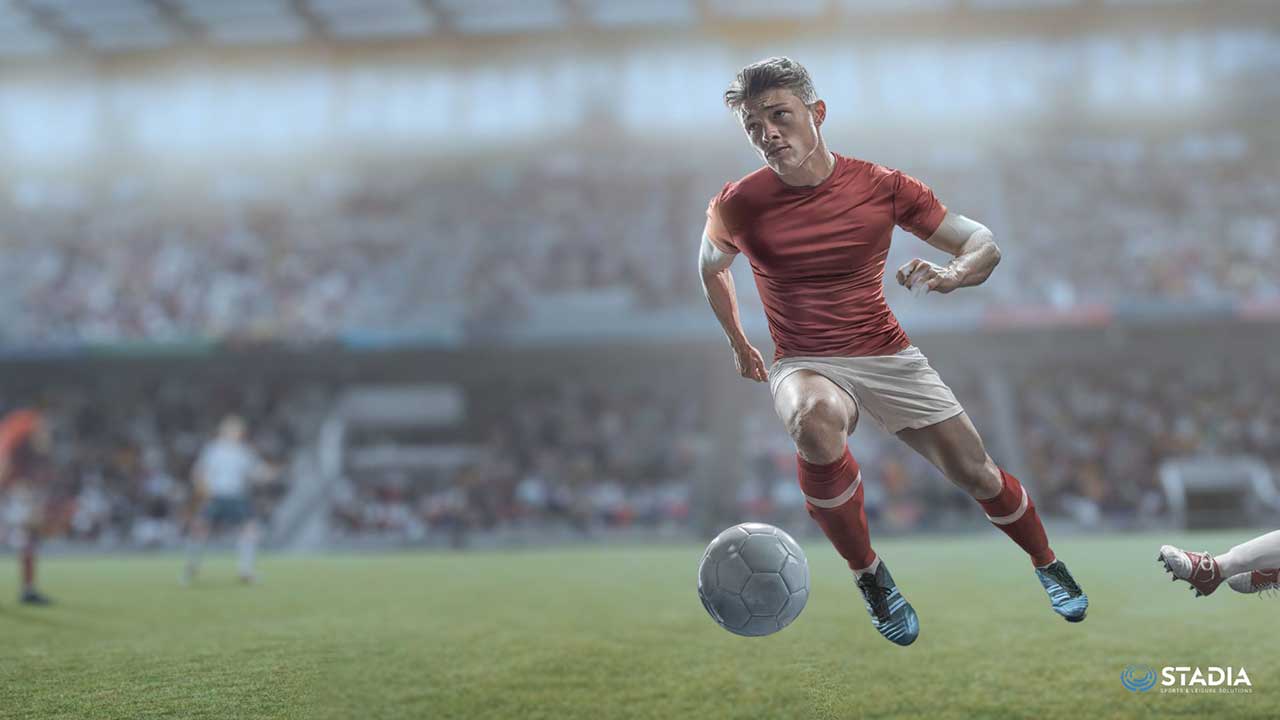Turf fields, integral to sports facilities, come in various designs, each of which offers different advantages. The choice of field type is important as it affects the potential uses of the pitch and the costs associated with its purchase, upkeep, renovation, and longevity. The optimal usage of fields varies considerably depending on the construction and maintenance of the pitch, ranging from 6 to even 60 hours per week.
Types of Field Surfaces
1. Natural Grass Fields
Composition: 100% plant-based, typically on sand or soil.
Advantages: Cheaper initial installation, best in open environments for natural growth.
Considerations: Dependent on climate, less robust to intensive use, performance issues in shaded areas.
2. Hybrid Turf Fields
Stitched Fibers Fields: Contains synthetic grass fibers stitched deep into the root zone and are known for their long-term durability and performance.
Reinforced Root zone: Combines synthetic fibers or supports within the upper root layer.
Carpet-Type: Grown on synthetic nets filled with root zone material and planted with natural grass.
3. Artificial Turf Fields
Composition: Made of synthetic fibers.
Advantages: Supports intensive use, less affected by weather, recommended for diverse sports applications.
Governed by FIFA’s Quality Program, which ensures optimum performance and safety and allows up to 60 hours of use per week.
Recommended Weekly Usage
The FIFA Stadium Guidelines 2022 provides a detailed table categorizing fields by type and recommended usage time. It is essential to follow these guidelines while planning and managing the field to ensure its longevity and performance.

Table made based on Figure 2.4.2, Field types and their usage from FIFA Stadium Guidelines 2022.
Importance of Maintenance
Effective maintenance is essential for any type of field. Regular, appropriate maintenance will extend the life of the field and ensure consistent performance. The Grounds Management Association points out several factors that influence the playability of a field on top of field construction:
- Regular and timely maintenance routines.
- Type and intensity of use (e.g. training vs. competition).
- Age of players (usage tends to increase with younger players).
- Local weather and environmental conditions.
Note:
The information and data presented in this article, particularly concerning field types and usage recommendations, are based on the FIFA Stadium Guidelines 2022 – https://publications.fifa.com/en/football-stadiums-guidelines/general-process-guidelines/design/turf-and-pitch-design/
The intention of this article is to promote the principles and practices outlined in the document to encourage awareness and adoption of sustainable pitch maintenance and usage strategies.

